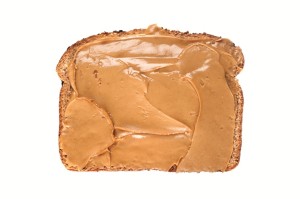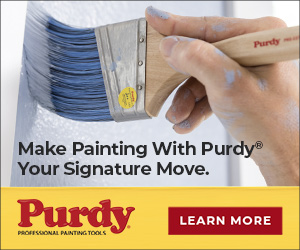The Hows and Whys of Bonding Primer
 The common link between all the various types of primer is that it is their job to prepare a surface and make it suitable for a topcoat. Not all primers, however, are created equal.
The common link between all the various types of primer is that it is their job to prepare a surface and make it suitable for a topcoat. Not all primers, however, are created equal.
When you’ve got a challenging surface—whether it’s a slick substrate or a compromised one—a bonding or adhesive primer is the go-to product of choice. Highly engineered, it’s a coating that promotes adhesion to the surface or existing coating as well as the new coat that you want to apply. You’re going to pay more, nearly double in many cases, but that’s because they’re designed to do two things very well: stick, and be stuck to.
“Most primers have adhesion characteristics,” says Frank Glowacki, director of marketing for Primers & Specialty Coatings at Rust-Oleum Corporation. “The so-called universal primers have good adhesion over a variety of surfaces, but in certain circumstances, they won’t have optimal results over the most dense surfaces.
That’s when you need a specialty bonding primer, for the most extreme adhesion needs.” Glowacki uses the analogy of putting peanut butter in a sandwich: The bottom slice of bread is the existing coating, the top slice is the new coating coming on, and the bonding primer serves as the peanut butter to make both of them stick together.
Depending on the product, bonding primers can also offer the advantage of accommodating lots of different coatings, including hot coatings with a high solvent content. Whereas an exothermic reaction may cause a major problem with a regular primer, the premium products can accept just about anything.
TOUGH PRODUCTS FOR TOUGH JOBS
Based on appearance, surfaces such as glass are slick, but there are numerous materials—such as fiberglass, glazed brick or stone, tile, Formica, and galvanized steel—that present particular challenges to adhesion as well. Glazed stone, which has been heated during processing, rather than coated, has less porosity than glass. Fiberglass is among the hardest materials, but Plexiglas may be even trickier because you also need flexibility.
“Then you’ve got challenging surfaces in which ordinary primers have difficulty with adhesion, like Kynar,” says Glowacki of the polyvinylidene fluoride (PVDF) resin that’s commonly used in exterior commercial-grade coatings. “It’s great for exterior trim of commercial buildings because of its resistance to weather. These products have a lifetime guarantee, but suppose you want to change the color. This is the perfect example of needing a bonding primer for the new paint to adhere to—and the chemistry of a typical all-purpose or multipurpose primer simply can’t do the job.”
BONDING PRIMERS AREN’T MAGIC
One of the major advantages of using a bonding primer is they save time and money, and if you can get the job done quicker, that’s a benefit. Especially for pros taking on a big job, who may not have the time to take down the gloss or sand the substrate. When it comes to best practices, though, bonding primer doesn’t take the place of good preparation. If you have an exterior wood surface, for example, that’s rotted or in need of repair, you should repair it before you coat it.
“Surface prep is the unsung hero of any project,” says George Englis, training manager for the Consumer Division of Valspar Paint. “Better prep leads to more durable results and you shouldn’t cut corners. Bonding primer is part of that—it’s made to stick to glossy or sealed surfaces and block stains. Pros will often turn to a bonding primer to cover questionable areas.”
The label for any specific product will dictate basic preparation. In general, it means having a clean, sound surface, which may or may not need to be sanded or partly de-glossed.
In most cases, that also means you don’t want to prime over chipping paint—although there are high-build bonding-primer products on the market designed to handle that situation. If paint is popping off, such products lock down the peeling paint and smooth the surface so you don’t see the previous peel barriers. As you might guess, a primer that bonds peeling paint is not suited for use on substrates such as glass, glazed brick or Kynar.
PUT ON YOUR COAT
Using the peanut-butter-sandwich analogy, applying the top slice of bread shortly after applying the peanut butter will allow for the best adhesion and durability. “Although the topcoat may be applied anytime after the bonding primer coat is applied, we recommend you topcoat within a week after priming for best adhesion results,” says Brendan Steidle, brand manager for Primers and Specialty Coatings at Rust-Oleum. “This will ensure the primer remains flexible to ‘grab’ the topcoat and deliver a level of adhesion you expect from a specialty bonding primer.”
Valspar’s Englis adds, “Our bonding primer is formulated with a resin that’s designed primarily to be adhesive and durable, but it is not a topcoat. They’re not designed to stand up to UV and moisture—that’s the topcoat’s job. Especially in an exterior environment, the sooner you can topcoat and protect the primer from the elements, the better the performance you’ll get.”
If you want to confirm the primer is holding, Englis recommends conducting a test in an inconspicuous area: Do a small brushout, and then perform a tape test to make sure it’s adhering.
Glowacki cautions against doing a pick test, however. “Typically, to check adhesion, a painter will apply the primer and then a day or two later, pick at the surface with a fingernail—they assume that if it comes off, it’s not working,” he says. Going back to the peanut butter sandwich analogy, Glowacki adds, “But the reality is that in order for the primer to bond to the topcoat, it’s got to remain flexible, like peanut butter. If it dries like peanut brittle, the top slice of bread, a.k.a. topcoat, won’t have the best adhesion or durability.”
Ultimately, you want an optimally formulated primer that allows for good cure but still lets the top piece of bread adhere. That doesn’t necessarily depend on the cure itself; it’s how the primer is formulated to allow a little bit of ‘bite.’
“Bonding primer is a great product, but it’s not needed in every situation,” says Englis. “And because it’s more expensive, a pro needs to balance the cost with how much time it’s going to save, as well as the times when it’s the only tool capable of handling a specific task. Bonding primers should be a part of every painter’s arsenal.”
______________________________________________________________________________________________
NAME CHECK
When considering bonding primers, you need to be aware of two common misconceptions:
1. Many products with ‘primer’ in the name aren’t purpose-built or suitable for use as bonding primers. Really, they’re sealers— designed to seal a porous surface and make it even for paint—so don’t try to force them beyond their specs.
2. Conversely, just because a bonding primer is highly engineered, it doesn’t mean it’s the right coating for every job. Using it over drywall, as an extreme example, would just be a waste of money. If you need a specific hide, odor blocking, or stain blocking, choose a primer with those characteristics.




